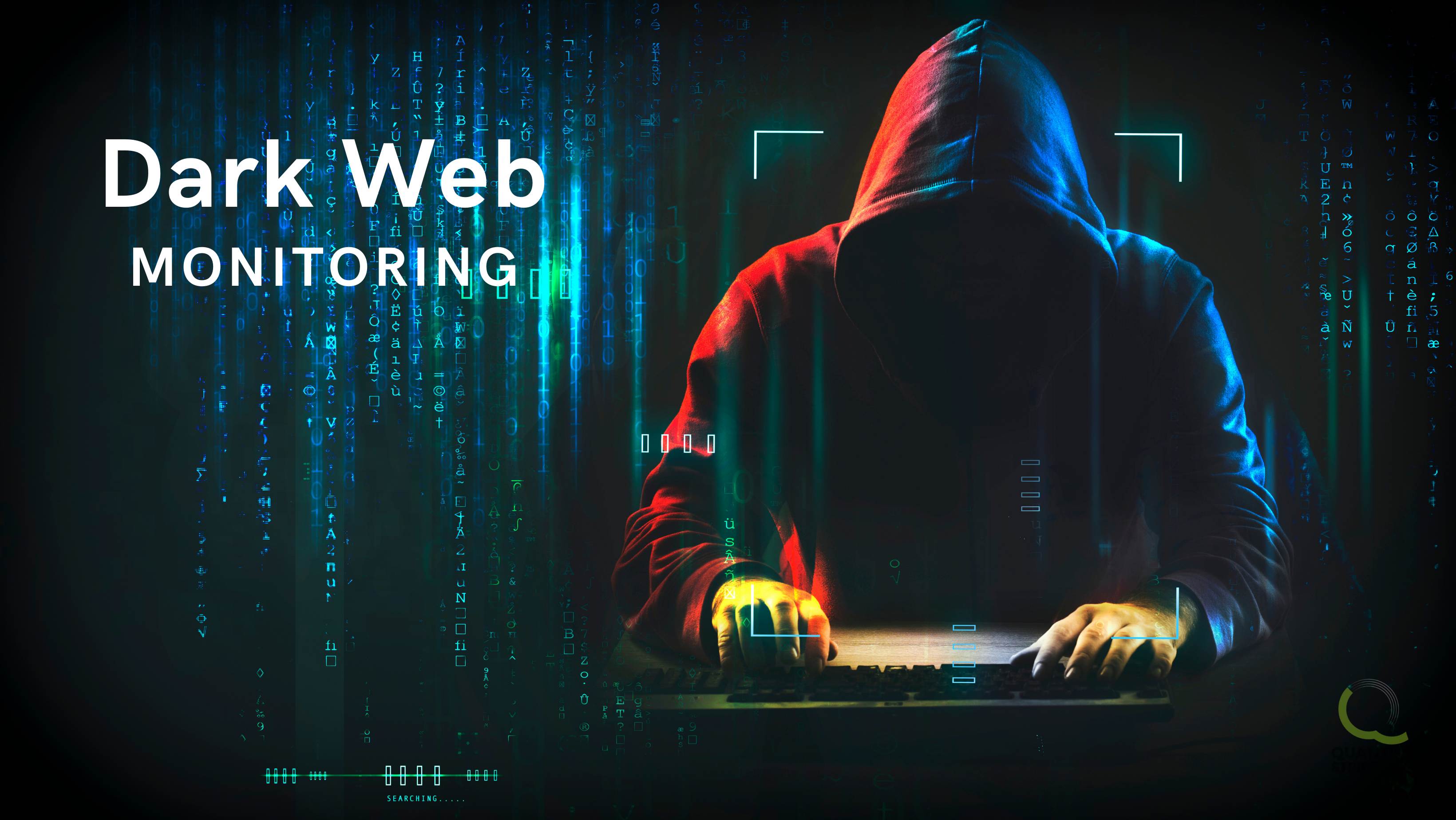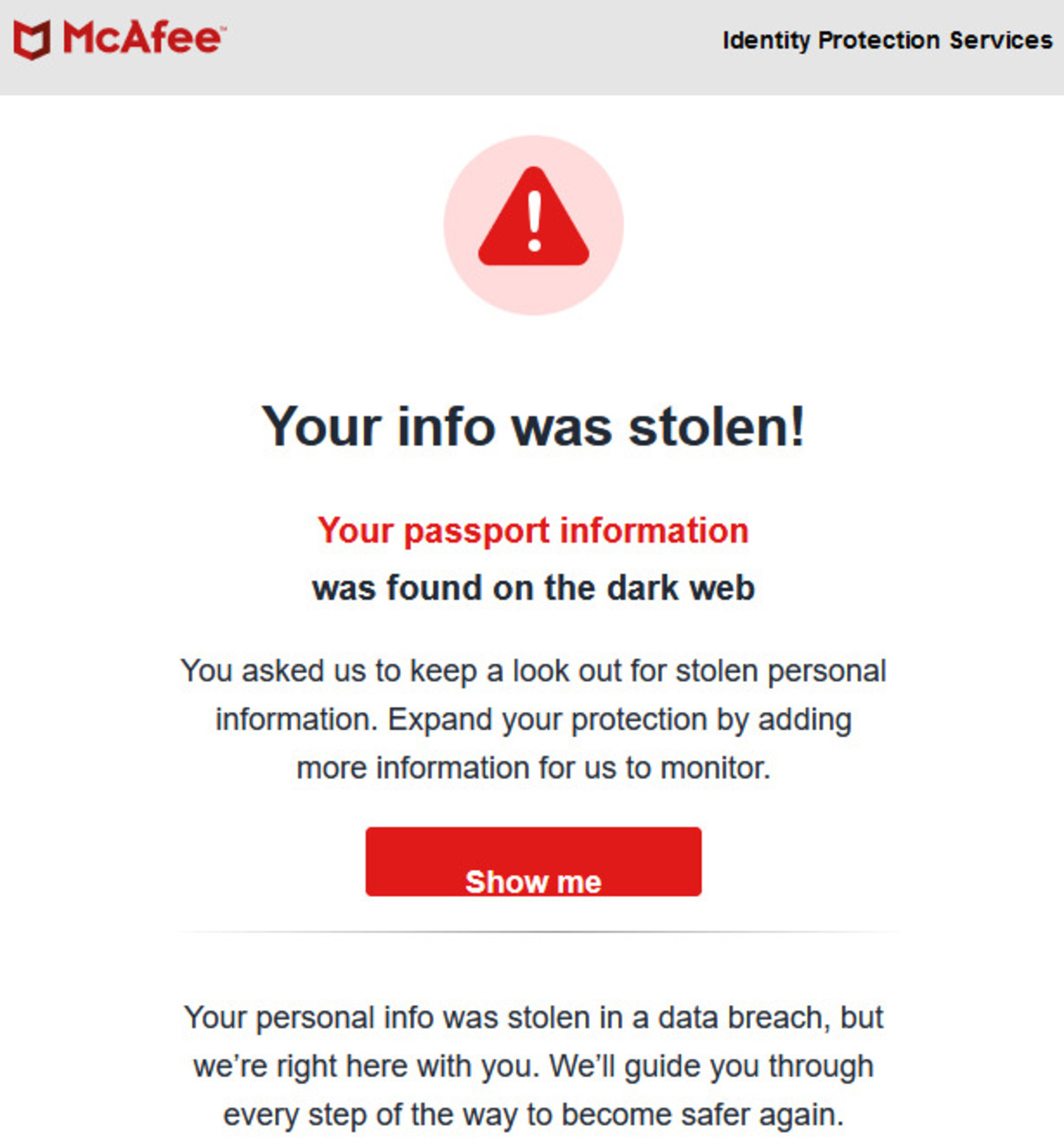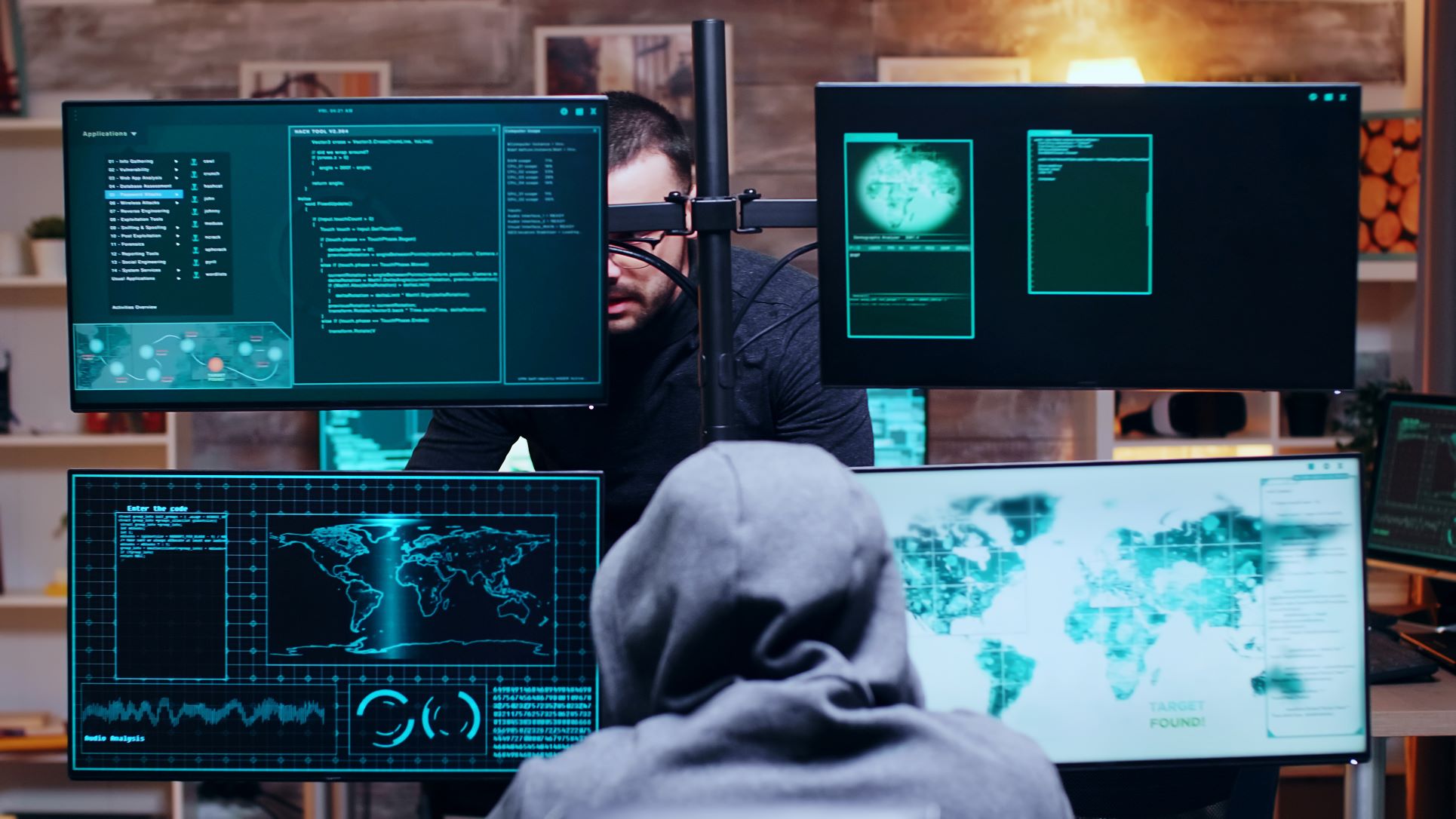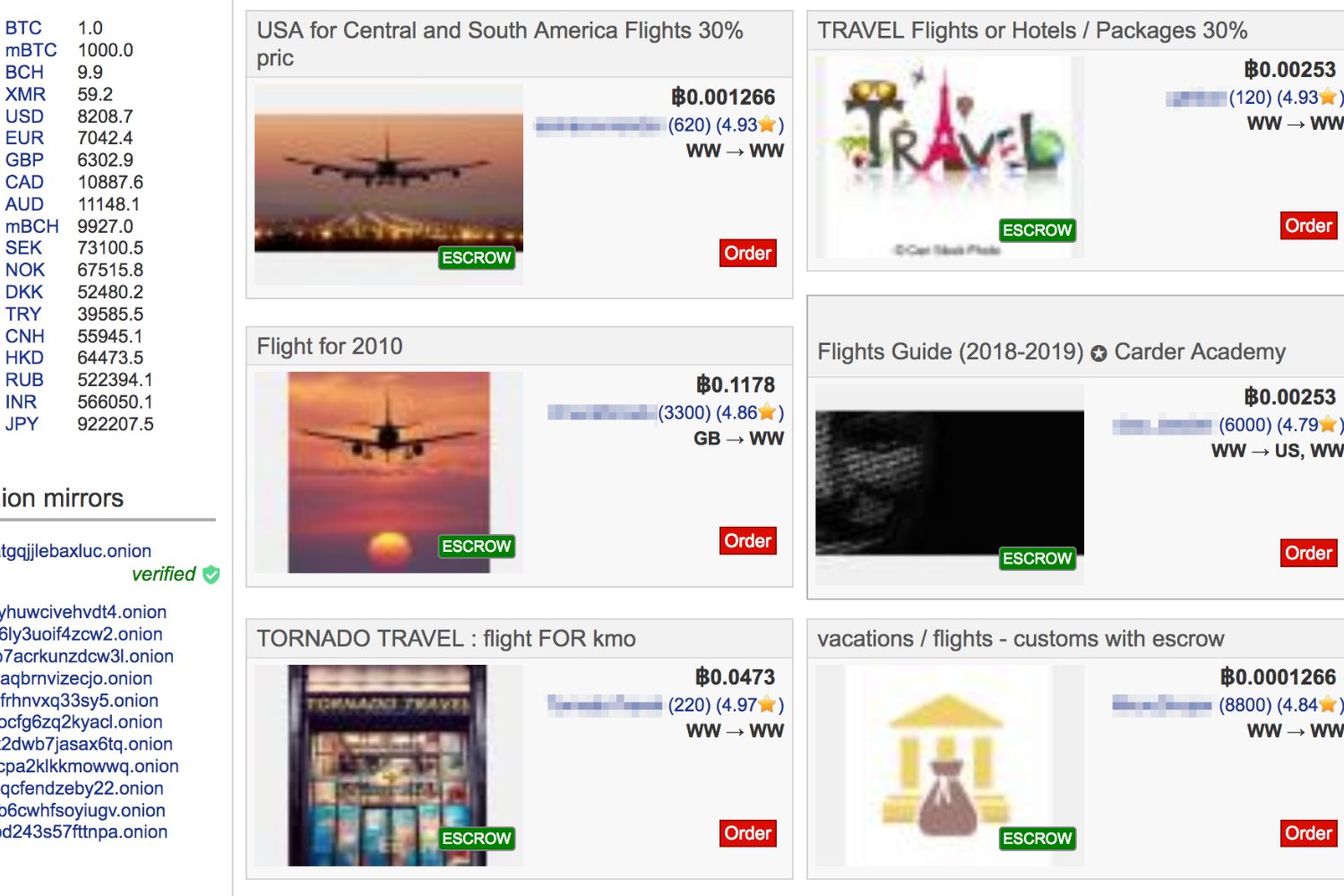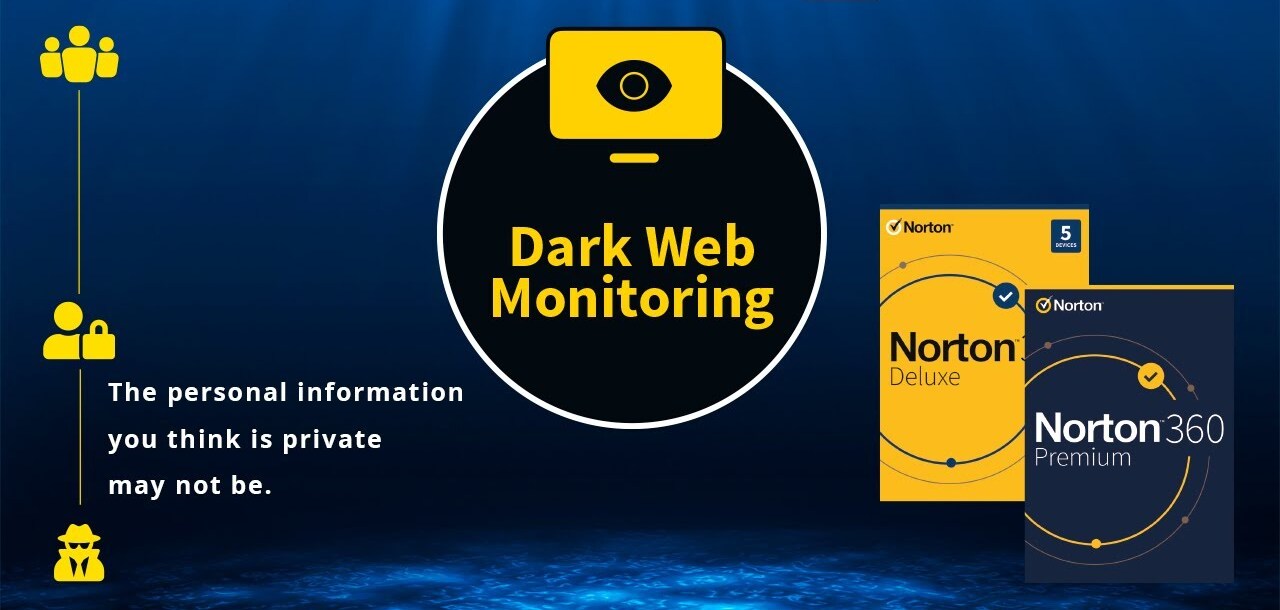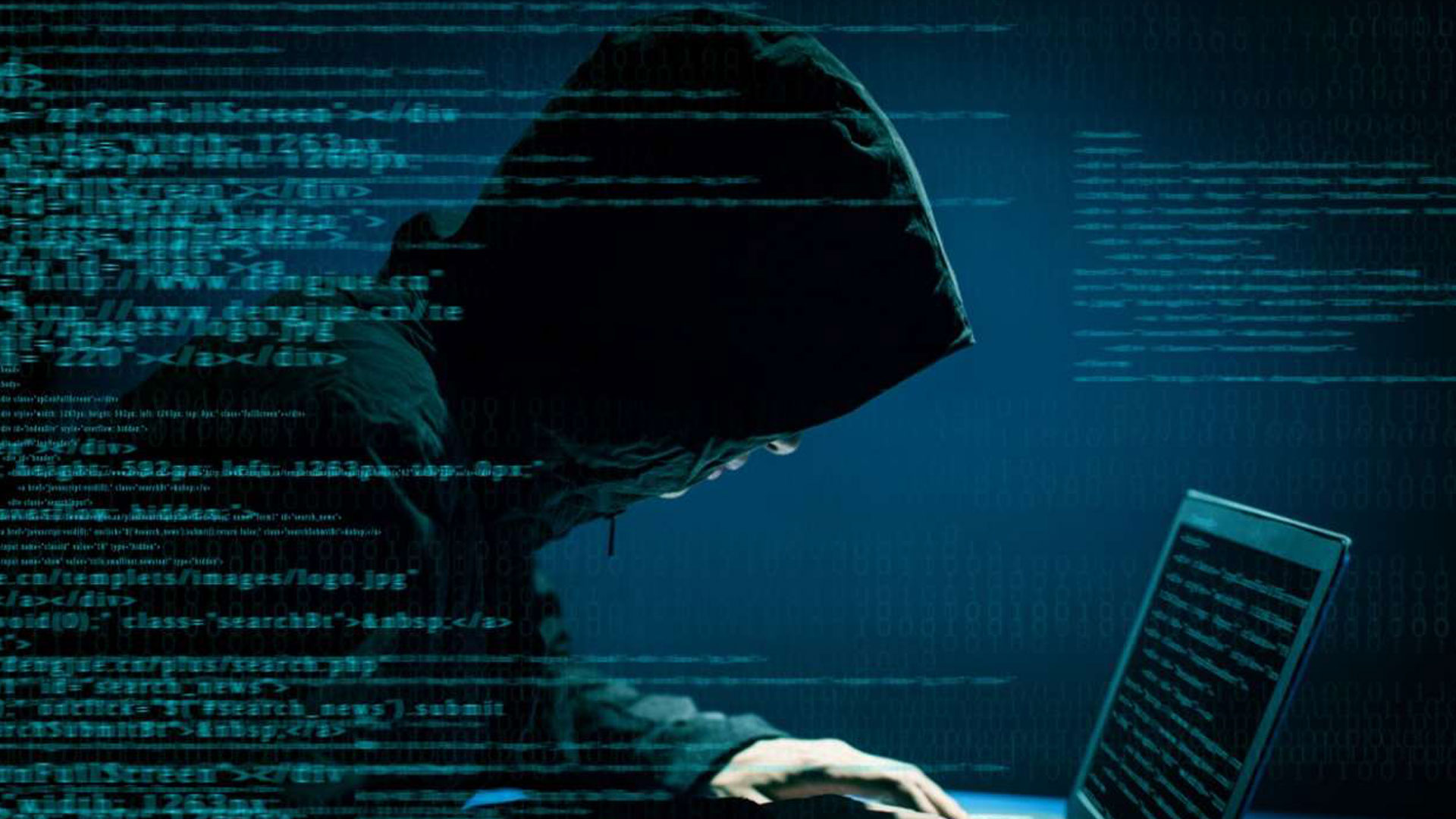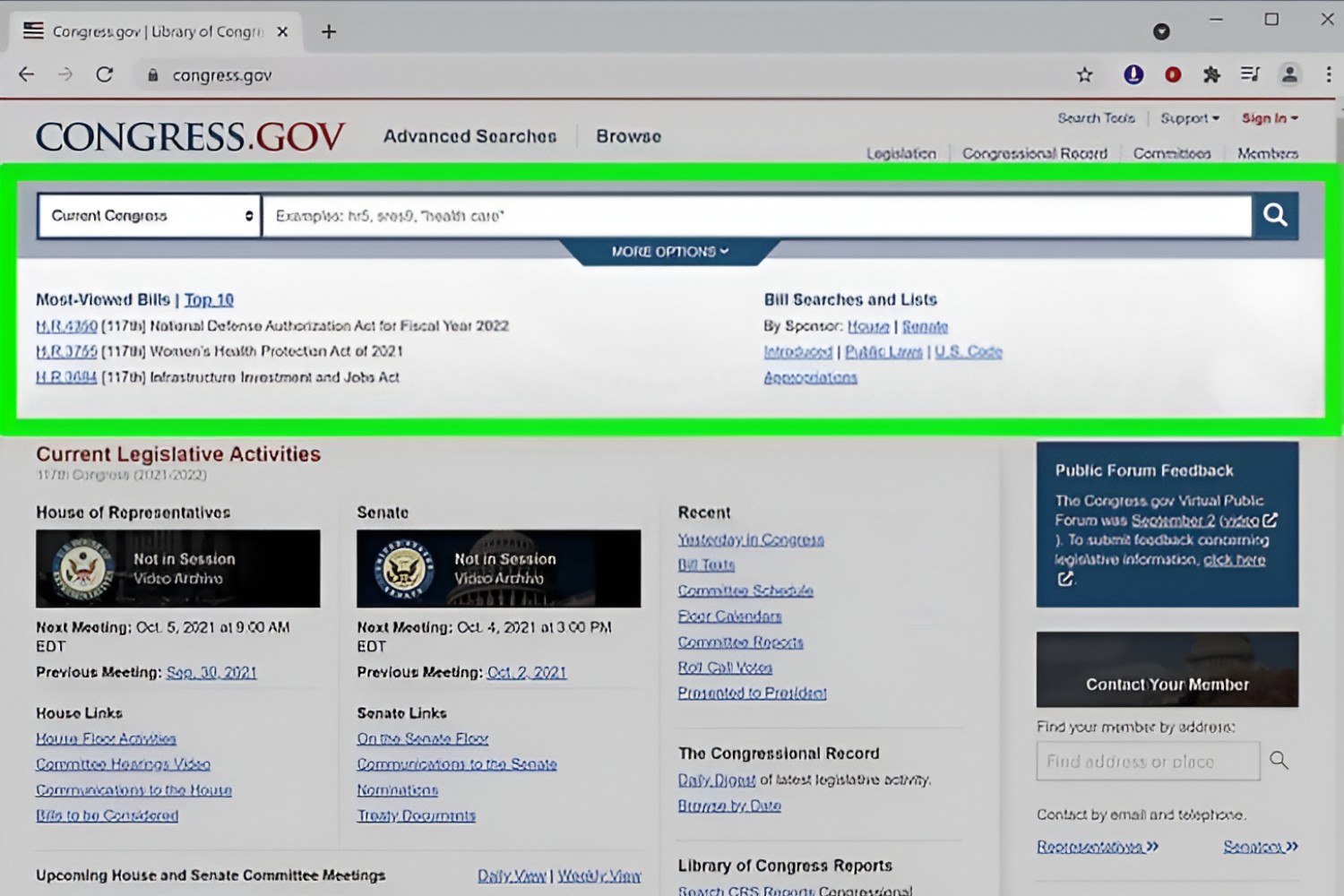Introduction
Welcome to the dark side of the internet. The realm known as the Dark Web has intrigued and captivated the attention of many due to its reputation as a mysterious and clandestine digital underworld. Filled with illicit activities, anonymous marketplaces, and hidden forums, the Dark Web presents significant risks to individuals and organizations alike.
In today’s digitally connected world, it has become increasingly crucial to protect ourselves from cyber threats. Among the various security measures available, one approach gaining popularity is Dark Web monitoring. This proactive solution helps safeguard against potential vulnerabilities, privacy breaches, and fraud that may emanate from the Dark Web.
But what exactly is the Dark Web, and how does Dark Web monitoring work? In this article, we will delve into the depths of the Dark Web, explore the concept of Dark Web monitoring, and discuss its importance in keeping your personal or business information secure.
So, hold on tight as we navigate the uncharted waters of the Dark Web and discover the unnerving secrets hidden within.
What is the Dark Web?
The Dark Web is a hidden part of the internet that is intentionally concealed and inaccessible through regular search engines. It is a network of websites and online resources that cannot be found through conventional means and are not indexed by search engines like Google or Bing.
Unlike the surface web, which comprises websites that are easily accessible to the general public, the Dark Web exists on encrypted networks and requires specific software, such as Tor, to access. This anonymity makes it an attractive haven for illegal activities and serves as a platform for cybercriminals to carry out nefarious deeds.
One aspect that sets the Dark Web apart is its decentralized nature. Instead of hosting websites and content on traditional servers, the Dark Web employs peer-to-peer networks, making it challenging to trace the origin of information or identify the individuals behind the websites.
The Dark Web is home to various illegal marketplaces, where one can find illicit goods and services, such as drugs, counterfeit currency, hacking tools, and stolen personal information. Additionally, it serves as a breeding ground for cybercrime forums, enabling criminals to exchange tips, tricks, and stolen data.
It’s essential to note that not everything on the Dark Web is illegal or inherently malicious. Whistleblowers and activists, for instance, may use the darkness to protect their identities and share sensitive information without fear of retribution. However, the dark underbelly of the Dark Web often overshadows these legitimate use cases.
In the next section, we will explore Dark Web monitoring, a proactive measure that can help mitigate the risks associated with the Dark Web and protect individuals and organizations from its potential harm.
What is Dark Web Monitoring?
Dark Web monitoring is a proactive security practice that involves monitoring the Dark Web for any signs of compromised information or potential threats. It enables individuals and organizations to stay one step ahead of cybercriminals by monitoring underground forums, marketplaces, and other hidden corners of the Dark Web.
The primary goal of Dark Web monitoring is to identify and mitigate any risks that may arise from stolen credentials, leaked personal information, or sensitive data being sold or traded on the Dark Web. By constantly scanning the Dark Web, monitoring tools can alert individuals or security teams when any information related to them or their organization appears on these illicit platforms, enabling them to take immediate action to minimize the potential damage.
The process of Dark Web monitoring typically involves the use of specialized software and services that utilize web crawlers and other advanced techniques to search for specific keywords, email addresses, usernames, or other identifying information that may indicate a security breach or potential threat.
When a match is found, the monitoring tool sends an alert, notifying the affected party of the compromised information. This enables individuals or organizations to take swift action, such as changing passwords, canceling credit cards, or implementing additional security measures to prevent further damage.
Dark Web monitoring is not limited to individuals or small businesses; it is also a crucial component of enterprise-level cybersecurity strategies. Organizations that handle vast amounts of sensitive data, such as financial institutions, healthcare providers, and government agencies, often employ Dark Web monitoring services to safeguard their valuable information and protect their customers from potential harm.
While Dark Web monitoring cannot prevent breaches or illegal activities from occurring, it provides an additional layer of security and awareness that allows individuals and organizations to protect themselves more effectively. By staying informed about potential threats and quickly responding to compromised information, individuals can mitigate the risks associated with the Dark Web and reduce the potential impact of cyberattacks.
Now that we understand what Dark Web monitoring is, let’s explore how it works in the next section.
How Does Dark Web Monitoring Work?
Dark Web monitoring works by utilizing advanced technology and specialized software to scan and monitor the hidden corners of the Dark Web for any signs of compromised information or potential threats. The process involves several steps, each designed to identify and mitigate risks effectively.
The first step in Dark Web monitoring is data collection. Monitoring tools utilize web crawlers and scrapers to scour various underground forums, marketplaces, and other hidden websites on the Dark Web. These tools search for specific keywords, email addresses, usernames, or other identifying information that may indicate a compromised account or leaked data.
Once the data is collected, it is analyzed using algorithms and machine learning techniques to identify patterns or anomalies. This analysis helps to distinguish between genuine threats and false positives, ensuring that the alerts generated by Dark Web monitoring tools are accurate and reliable.
When a potential threat or compromised information is detected, Dark Web monitoring tools send real-time alerts to the affected individuals or organizations. These alerts may include details about the compromised information, such as usernames, passwords, financial data, or personally identifiable information (PII).
Upon receiving the alert, individuals or security teams can take immediate action to mitigate the potential damage. This may involve changing passwords, notifying authorities, implementing additional security measures, or informing affected individuals or customers.
It is important to note that Dark Web monitoring is not a one-time process. The Dark Web is constantly evolving, and new threats and vulnerabilities emerge regularly. Therefore, monitoring tools continuously scan and monitor the Dark Web on an ongoing basis to ensure that any new risks are promptly identified and addressed.
In addition to proactive monitoring, some Dark Web monitoring services also provide additional features, such as password vaults and identity theft protection. These tools offer an extra layer of security by securely storing passwords and monitoring credit reports for any suspicious activities that may be indicative of identity theft.
By leveraging advanced technology and constant vigilance, Dark Web monitoring plays a crucial role in helping individuals and organizations stay ahead of cyber threats originating from the Dark Web. It provides proactive detection capabilities, allowing for timely response and mitigation of potential risks before they escalate into significant security breaches.
Next, let’s explore why Dark Web monitoring is important in today’s digital landscape.
Why is Dark Web Monitoring Important?
Dark Web monitoring is essential in today’s digital landscape due to the increasing risks posed by cyber threats originating from the Dark Web. Here are several reasons why Dark Web monitoring is important:
1. Early Detection of Security Breaches: Dark Web monitoring allows for early detection of security breaches. By continuously scanning the Dark Web for any signs of compromised information, monitoring tools can alert individuals or organizations when their data appears on illicit platforms. This enables immediate action to be taken, minimizing the potential damage caused by a security breach.
2. Protection Against Identity Theft: The Dark Web is rife with stolen personal information, which often leads to identity theft. Dark Web monitoring helps individuals and organizations protect against the misuse of their personal data by alerting them when their credentials or PII emerge on the Dark Web.
3. Safeguarding Business Reputation: For businesses, a security breach resulting in leaked customer data can have severe consequences for their reputation. Dark Web monitoring helps organizations proactively detect and mitigate potential threats, ensuring the protection of customer data and maintaining trust.
4. Mitigating Financial Loss: Dark Web monitoring can help prevent financial loss by identifying unauthorized access to financial accounts, stolen credit card information, or fraudulent activities being carried out on the Dark Web. Timely detection and response can minimize the financial impact of these malicious activities.
5. Compliance with Data Protection Regulations: Many industries, such as healthcare and finance, have robust data protection regulations to ensure the security and privacy of sensitive information. Dark Web monitoring can help organizations demonstrate compliance with these regulations by actively monitoring for any compromise of sensitive data.
6. Proactive Security Strategy: Incorporating Dark Web monitoring as part of a comprehensive security strategy allows organizations to take a proactive approach to cybersecurity. By keeping a constant watch on the Dark Web, businesses can stay ahead of emerging threats and take necessary actions to protect their digital assets and sensitive information.
7. Peace of Mind: Dark Web monitoring provides individuals and businesses with peace of mind, knowing that their information is being actively monitored and any potential risks will be promptly identified. This enhanced security posture can alleviate concerns and allow individuals and organizations to focus on their core activities without constantly worrying about hidden cybersecurity threats.
In an ever-evolving digital landscape, Dark Web monitoring is paramount for individuals and organizations alike. By being proactive, staying informed, and taking prompt action, Dark Web monitoring helps mitigate the risks associated with the Dark Web and ensures the protection of sensitive information.
Next, let’s explore what Dark Web monitoring actually monitors and how it helps in preventing potential security breaches.
What Does Dark Web Monitoring Monitor?
Dark Web monitoring focuses on monitoring specific types of information and activities that occur on the Dark Web. Here are some key elements that Dark Web monitoring tools typically monitor:
1. Stolen Credentials: Dark Web monitoring scans for compromised usernames, passwords, or any login credentials that may have been stolen and are being traded or sold on the Dark Web. This allows individuals and organizations to identify if their accounts have been compromised and take immediate action to secure them.
2. Personally Identifiable Information (PII): Monitoring tools search for any instances of leaked personally identifiable information, such as Social Security numbers, driver’s license numbers, or financial account details. If any PII is detected, individuals and organizations can take steps to prevent identity theft or fraudulent activities.
3. Financial Data: Dark Web monitoring monitors for any signs of leaked financial data, including credit card information, bank account details, or financial transaction records. Detecting compromised financial data can help prevent unauthorized access and financial loss.
4. Company Data: Organizations can utilize Dark Web monitoring to monitor for instances of leaked company data, intellectual property, or trade secrets. By identifying any compromise of sensitive business information, companies can take immediate action to protect their assets and maintain a competitive edge.
5. Threat Intelligence: Dark Web monitoring tools also monitor underground forums and marketplaces for discussions and exchange of information related to potential cyber threats. This enables organizations to stay informed about emerging threats and vulnerabilities, allowing them to proactively implement necessary security measures.
6. Hacktivist Activities: Dark Web monitoring can also monitor for any activities related to hacktivism or cyber activists targeting organizations or individuals. By watching for signs of planned attacks or discussions about targeting specific entities, Dark Web monitoring tools can help identify potential threats and mitigate them before any significant damage occurs.
7. Data Breach Notifications: Dark Web monitoring services may also monitor for data breach notifications posted on the Dark Web. This allows individuals or organizations to discover if their data has been compromised and take appropriate actions, such as notifying affected parties or changing passwords.
By monitoring these specific elements on the Dark Web, Dark Web monitoring tools provide individuals and organizations with valuable insights into potential risks and security breaches. This proactive approach enables prompt action to be taken, minimizing the impact of cyber threats originating from the Dark Web.
Next, let’s explore the benefits of implementing Dark Web monitoring in your personal or business security strategy.
What are the Benefits of Dark Web Monitoring?
Implementing Dark Web monitoring offers several key benefits that help individuals and organizations protect themselves from the risks associated with the Dark Web. Let’s explore some of the advantages:
1. Early Threat Detection: Dark Web monitoring allows for early detection of potential security breaches. By constantly scanning the Dark Web for signs of compromised information, individuals and organizations can receive real-time alerts when their data appears on illicit platforms. This provides an opportunity to take immediate action and mitigate any potential risks before they escalate into significant security incidents.
2. Proactive Risk Mitigation: Dark Web monitoring takes a proactive approach to cybersecurity. By monitoring for compromised information or discussions related to potential cyber threats, individuals and organizations can stay one step ahead of malicious actors. This proactive stance helps prevent security breaches and minimizes the impact of cyber-attacks.
3. Protection Against Identity Theft: Dark Web monitoring helps protect individuals from identity theft by monitoring for instances of leaked personally identifiable information (PII). If PII appears on the Dark Web, individuals can take immediate action to secure their accounts, change passwords, or notify relevant authorities. This reduces the risk of identity theft and minimizes the potential impact on personal and financial well-being.
4. Safeguarding Corporate Reputation: For businesses, reputation is paramount. Dark Web monitoring helps safeguard a company’s reputation by alerting them to potential security breaches or leaked customer data on the Dark Web. Prompt action can be taken to address the issue, minimizing the negative impact on the organization’s brand image and customer trust.
5. Compliance with Data Protection Regulations: Dark Web monitoring assists organizations in meeting regulatory requirements related to data protection. By actively monitoring for breached data or compromised information, businesses can demonstrate their commitment to protecting sensitive data and comply with industry-specific data protection regulations.
6. Enhanced Cybersecurity Awareness: Dark Web monitoring provides individuals and organizations with greater awareness of the evolving cybersecurity landscape. By staying informed about emerging threats, new hacking techniques, and potential vulnerabilities, individuals and organizations can improve their overall cybersecurity posture and make informed decisions regarding security measures and protocols.
7. Peace of Mind: Knowing that Dark Web monitoring is in place provides individuals and organizations with peace of mind. They can rest assured that their data is actively being monitored, potential threats are being detected, and proactive measures are taken to mitigate risks. This peace of mind allows individuals and organizations to focus on their core activities without constantly worrying about hidden cybersecurity threats.
By taking advantage of Dark Web monitoring, individuals and organizations can mitigate the risks associated with the Dark Web, enhance their cybersecurity defenses, and protect their personal information and sensitive data.
Next, let’s explore how you can implement Dark Web monitoring in your personal or business security strategy.
How Can I Implement Dark Web Monitoring?
Implementing Dark Web monitoring in your personal or business security strategy involves several key steps. Here’s a guide on how you can get started:
1. Research Dark Web Monitoring Services: Start by researching and identifying reputable Dark Web monitoring services. Look for providers with a proven track record in cybersecurity, advanced monitoring capabilities, and positive customer reviews. Consider factors such as cost, features, and customer support to ensure a good fit for your needs.
2. Define Monitoring Scope: Determine the scope and scale of your monitoring needs. Consider factors such as the number of users or accounts to be monitored, the type of information you want to monitor, and any specific compliance requirements applicable to your industry.
3. Select an appropriate Dark Web monitoring service: Choose a Dark Web monitoring service that aligns with your monitoring scope and requirements. Ensure that the service provides both broad coverage of the Dark Web and specific monitoring capabilities for the types of information relevant to you, such as credentials, PII, or financial data.
4. Evaluate Monitoring Tools: Assess the monitoring tools provided by the chosen service. Look for features such as real-time alerts, comprehensive scanning capabilities, and user-friendly interfaces. Consider whether the tools integrate with your existing security systems or provide additional features such as password vaults or identity theft protection.
5. Implement Monitoring Tools: Once you’ve selected a Dark Web monitoring service, work with the provider to implement the monitoring tools. This may involve setting up user accounts, configuring monitoring parameters, and integrating the tools into your existing cybersecurity infrastructure. Ensure that the necessary security protocols are in place to protect the monitored information.
6. Monitor and Review Alerts: Regularly monitor and review the alerts generated by the Dark Web monitoring tools. Pay close attention to any alerts indicating compromised information or potential threats. Establish clear procedures and protocols to respond to these alerts promptly and effectively.
7. Take Immediate Action: When a potential threat or compromised information is identified, take immediate action to mitigate the risk. This may involve changing passwords, notifying relevant authorities, informing affected individuals or customers, or implementing additional security measures to prevent further damage.
8. Maintain Ongoing Monitoring: Dark Web monitoring is not a one-time task. The Dark Web constantly evolves, and new threats emerge regularly. Ensure that your monitoring tools continuously scan and monitor the Dark Web on an ongoing basis. Regularly review and update your monitoring parameters to adapt to the changing cybersecurity landscape.
9. Stay Informed: Stay informed about the latest trends and best practices in Dark Web monitoring and cybersecurity. Attend conferences, read industry publications, and engage with cybersecurity communities to enhance your knowledge and understanding of potential threats and effective monitoring strategies.
By following these steps and staying committed to ongoing Dark Web monitoring, you can effectively implement and maintain a robust security strategy that defends against threats originating from the Dark Web.
Now that you have a better understanding of how to implement Dark Web monitoring, let’s summarize the key points we’ve discussed so far.
Conclusion
The Dark Web represents a hidden and mysterious realm of the internet, filled with illicit activities, stolen information, and cyber threats. Dark Web monitoring offers a proactive approach to cybersecurity, allowing individuals and organizations to stay one step ahead of malicious actors and protect themselves from potential harm.
In this article, we explored the concept of Dark Web monitoring and its importance in today’s digital landscape. We learned that Dark Web monitoring involves continuously scanning the Dark Web for compromised information, monitoring underground forums and marketplaces, and providing real-time alerts when potential threats are detected.
We discussed the benefits of Dark Web monitoring, including early threat detection, proactive risk mitigation, protection against identity theft, safeguarding of corporate reputation, compliance with data protection regulations, enhanced cybersecurity awareness, and peace of mind.
Additionally, we explored how Dark Web monitoring works, including data collection, analysis, real-time alerts, and continuous scanning for evolving threats. We highlighted what Dark Web monitoring typically monitors, such as stolen credentials, PII, financial data, company data, threat intelligence, and data breach notifications.
We also provided guidance on how to implement Dark Web monitoring, which includes researching reputable monitoring services, defining monitoring scope, selecting appropriate monitoring tools, implementing the tools, monitoring and reviewing alerts, taking immediate action, maintaining ongoing monitoring, and staying informed about the latest trends and best practices.
By incorporating Dark Web monitoring into your personal or business security strategy, you can enhance your cybersecurity defenses, mitigate risks, protect sensitive information, and maintain a proactive stance against the evolving threats of the Dark Web.
Remember, the Dark Web is a dangerous place, but with Dark Web monitoring, you can shine a light on the hidden risks and stay protected in the ever-changing digital landscape.







